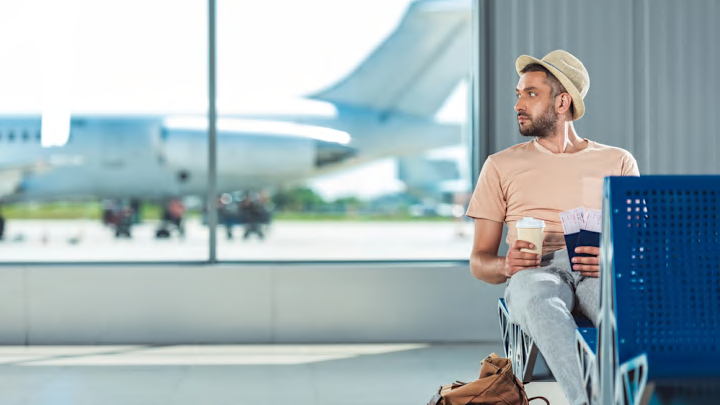The Airport Ritual That Keeps Me Grounded

Airports are, by nature, places of movement—designed for departure, transition, and the unknown. They hum with energy, flooded with rushing footsteps, rolling suitcases, delayed announcements, and gate changes. For many, they’re chaotic at best and anxiety-inducing at worst.
But over time, I found a strange sense of peace in airports. Not because they became less overwhelming, but because I created a ritual that made them feel more human, more personal—more grounding. It’s a simple thing. It doesn’t involve meditation apps or noise-cancelling headphones. It starts with sitting still, coffee in hand, watching the people around me.
That small, quiet act has become my airport ritual—and it does more to center me than anything else.
Making Space in a Place That Demands Motion
Airports are not built for stillness. They urge you to move—to security, to the gate, to boarding zones labeled A through whatever. But amid all that motion, there’s a pocket of time after you’ve cleared security and before your gate starts boarding. That’s the moment I claim for myself.
I find a spot near a window, ideally with a view of the tarmac. I grab a coffee—not because I need the caffeine, but because the warmth in my hand gives me something to anchor to. And then I sit. No scrolling. No answering emails. Just sitting.
In a space designed for departure, I pause. And that pause becomes a tiny act of resistance.
The People-Watching Meditation
The beauty of airports is that they are full of people in motion, each carrying their own story. The couple navigating their first trip together. The business traveler in polished shoes. The child dragging a stuffed animal and asking a hundred questions.
As I watch them, I start to feel connected—to lives I’ll never know, to the shared vulnerability of travel, to the quiet hum of human intention. We are all moving toward something, carrying hopes, anxieties, and snacks.
People-watching becomes more than a way to pass time. It becomes a meditation on movement, transition, and the quiet resilience it takes to be somewhere unfamiliar.
Letting Go of the Illusion of Control
Travel rarely goes exactly as planned. Flights get delayed. Seats get reassigned. A terminal gate that once felt reassuringly final is suddenly updated.
My ritual gives me a place to acknowledge that unpredictability, rather than fight it. I don’t try to control the pace of boarding or worry about the things I forgot to pack. I remind myself that I’ve done what I can. The rest is movement, and I’ll meet it as I go.
In that stillness, I let go of the list-making, the planning, the low-grade anxiety that often follows me through security lines. I return to presence, one sip of coffee at a time.
The Familiar in the Foreign
I’ve done this in airports around the world—from massive international terminals to tiny regional gates with a single vending machine. The details shift, but the ritual stays the same.
It’s become my version of home: not a physical place, but a moment I create. A small island of familiarity I carry with me through time zones and terminals. That consistency keeps me grounded, even when everything else is in flux.
What the Ritual Taught Me
I didn’t plan this ritual. It formed slowly, out of necessity and repetition. But over time, it became something I looked forward to—not because it makes travel easier, but because it makes travel more human.
It taught me that I don’t have to fill every moment with productivity. That a pause is not a waste, but a gift. That even in liminal spaces, we can find grounding rituals that remind us who we are.
The Takeaway: Stillness Can Travel With You
Airports ask us to move. To go. To be somewhere else. But in the middle of all that, I found stillness—not by waiting for the right environment, but by choosing to create it.
That ritual doesn’t make the flight shorter or the airport less crowded. But it does remind me that I can carry calm with me. That presence is portable. That even in the most transient spaces, we can create moments of meaning.
And sometimes, that’s all it takes to feel grounded—not where you are, but how you meet the moment.